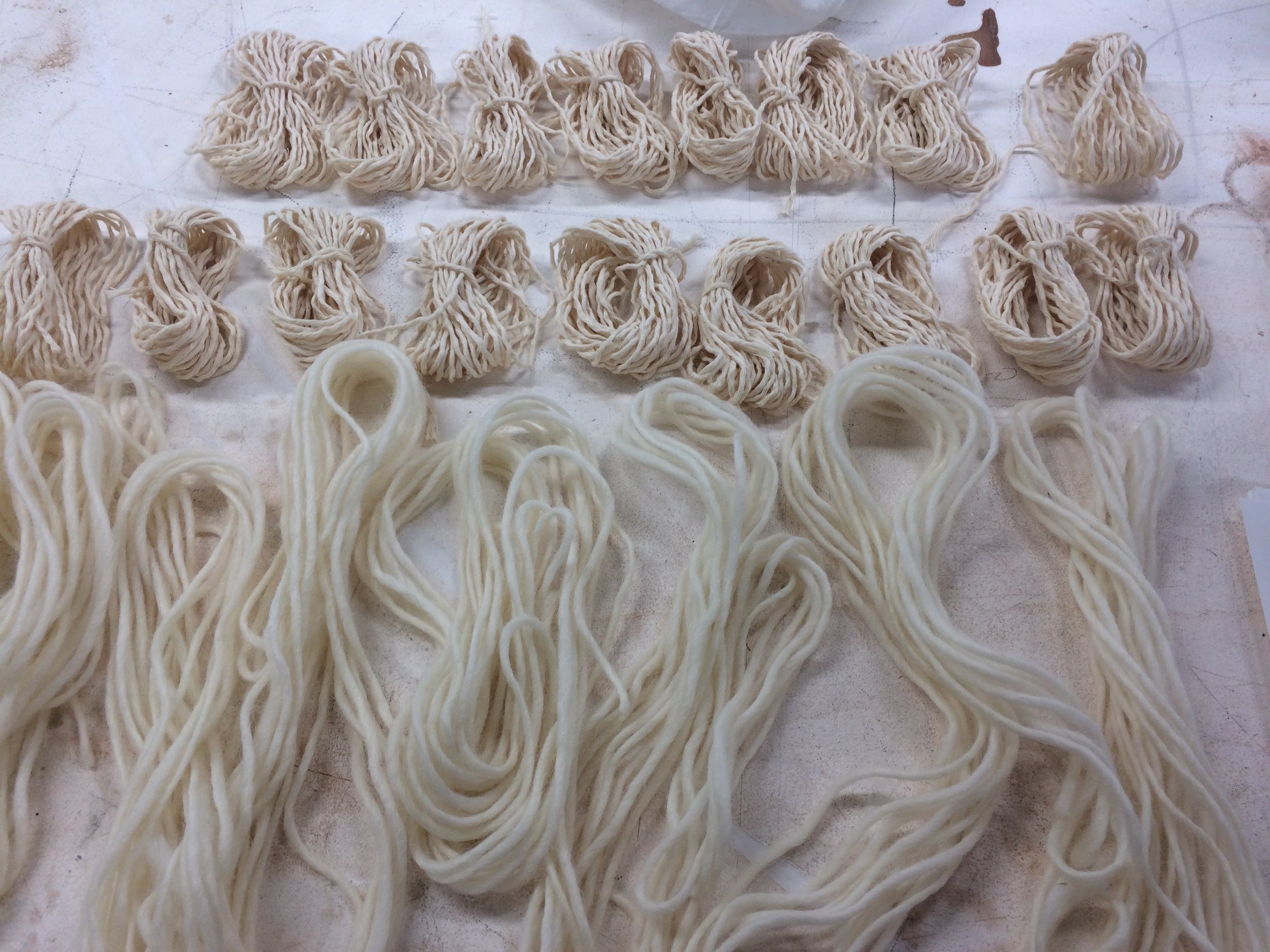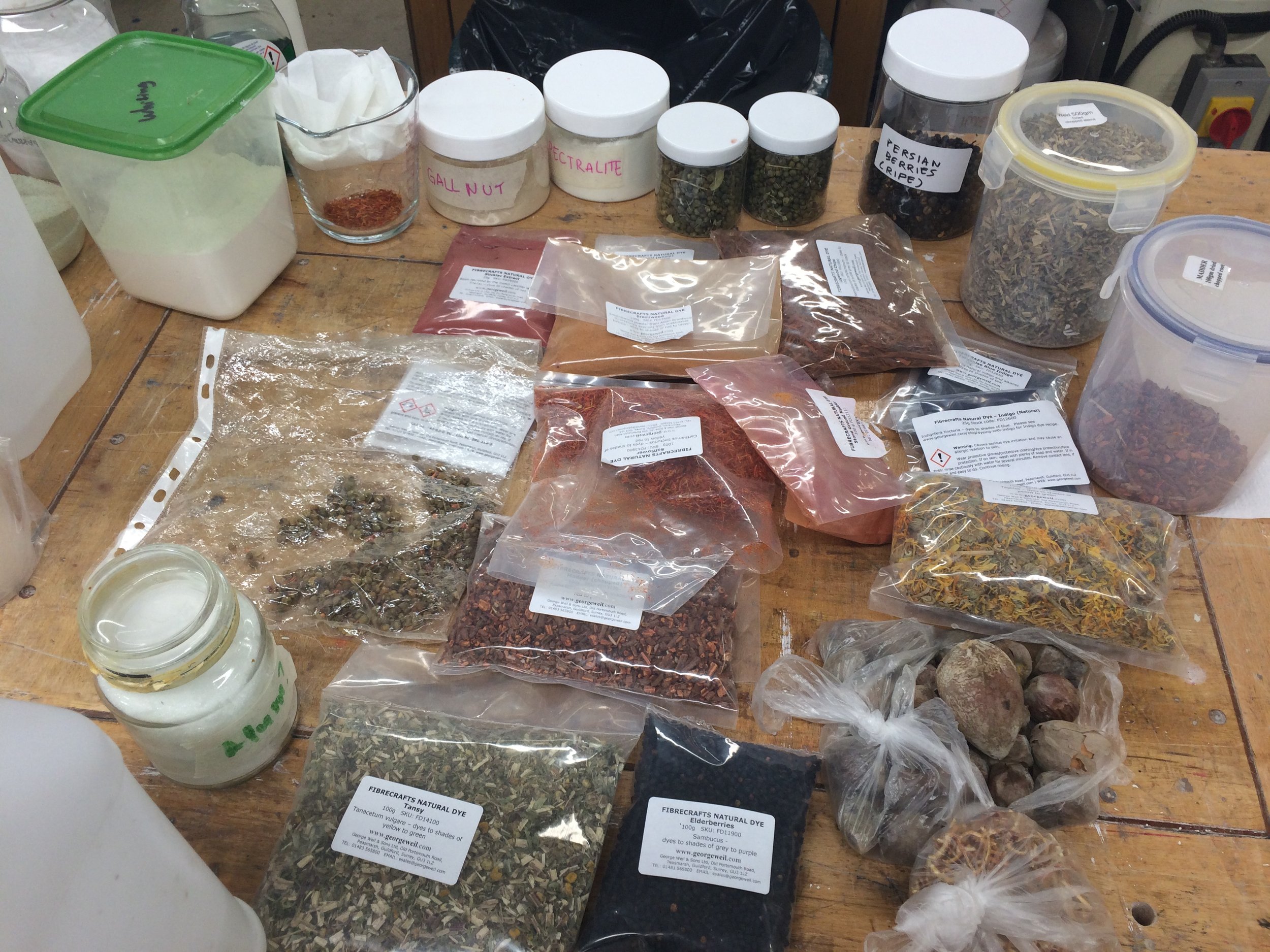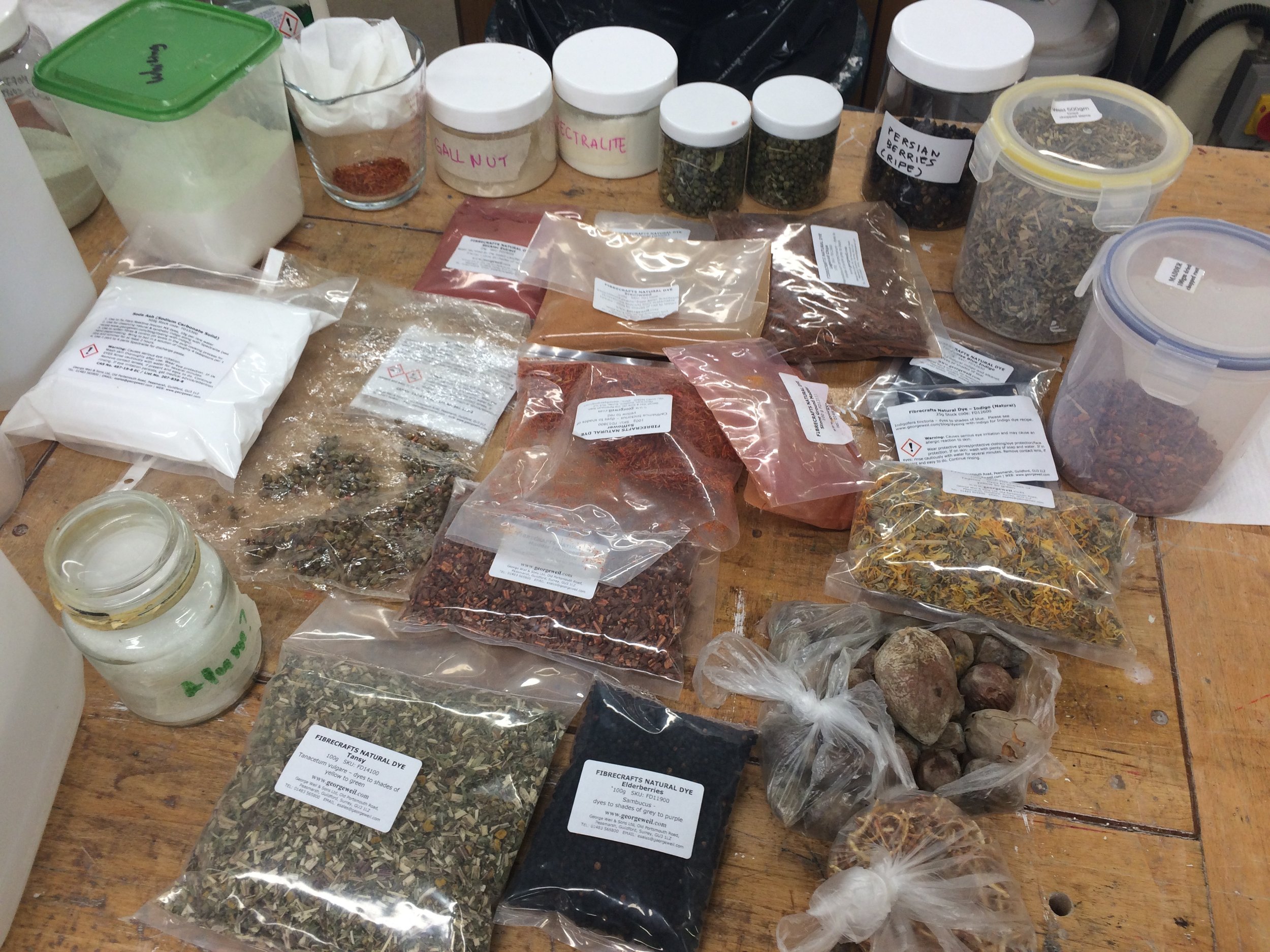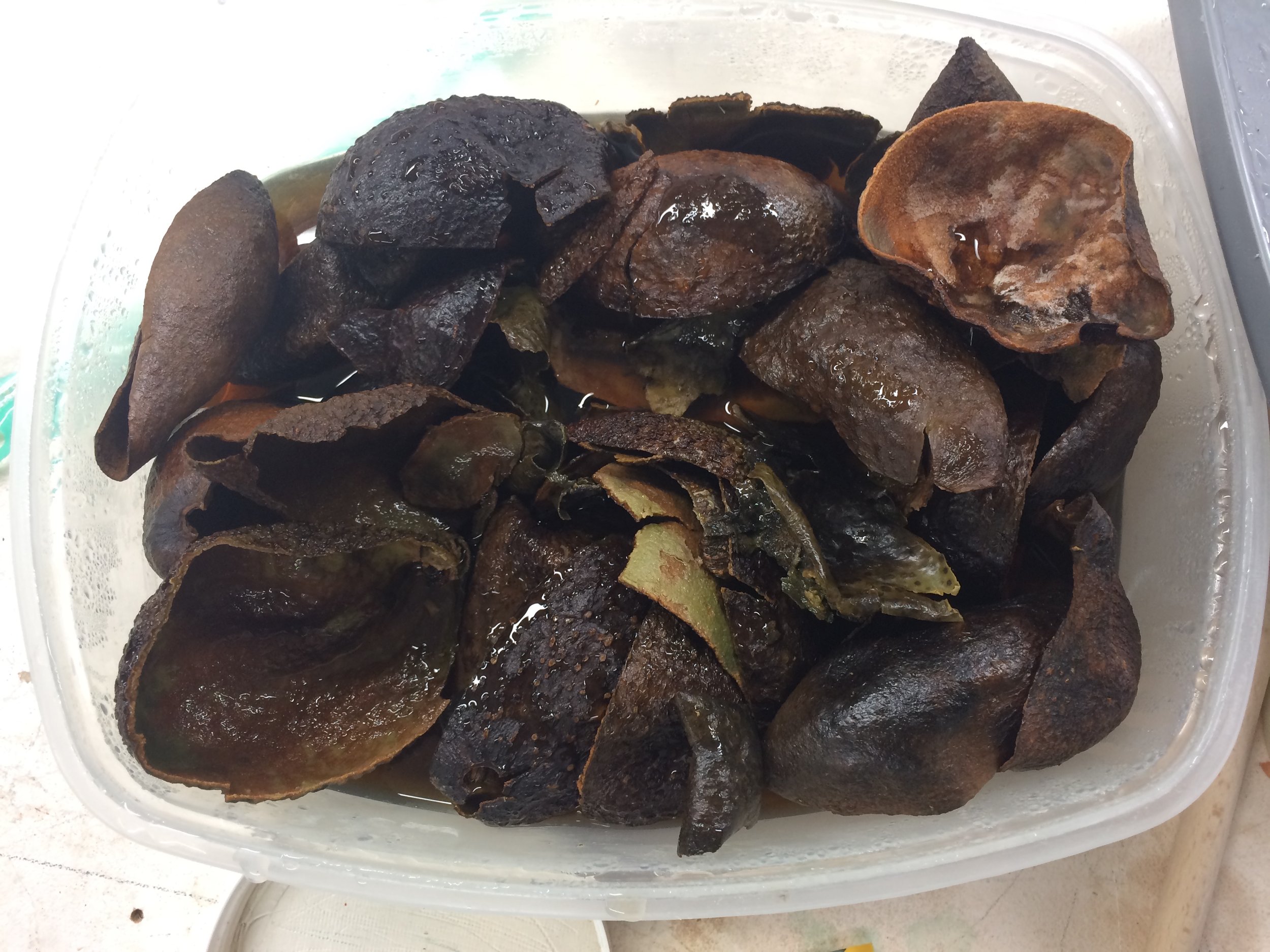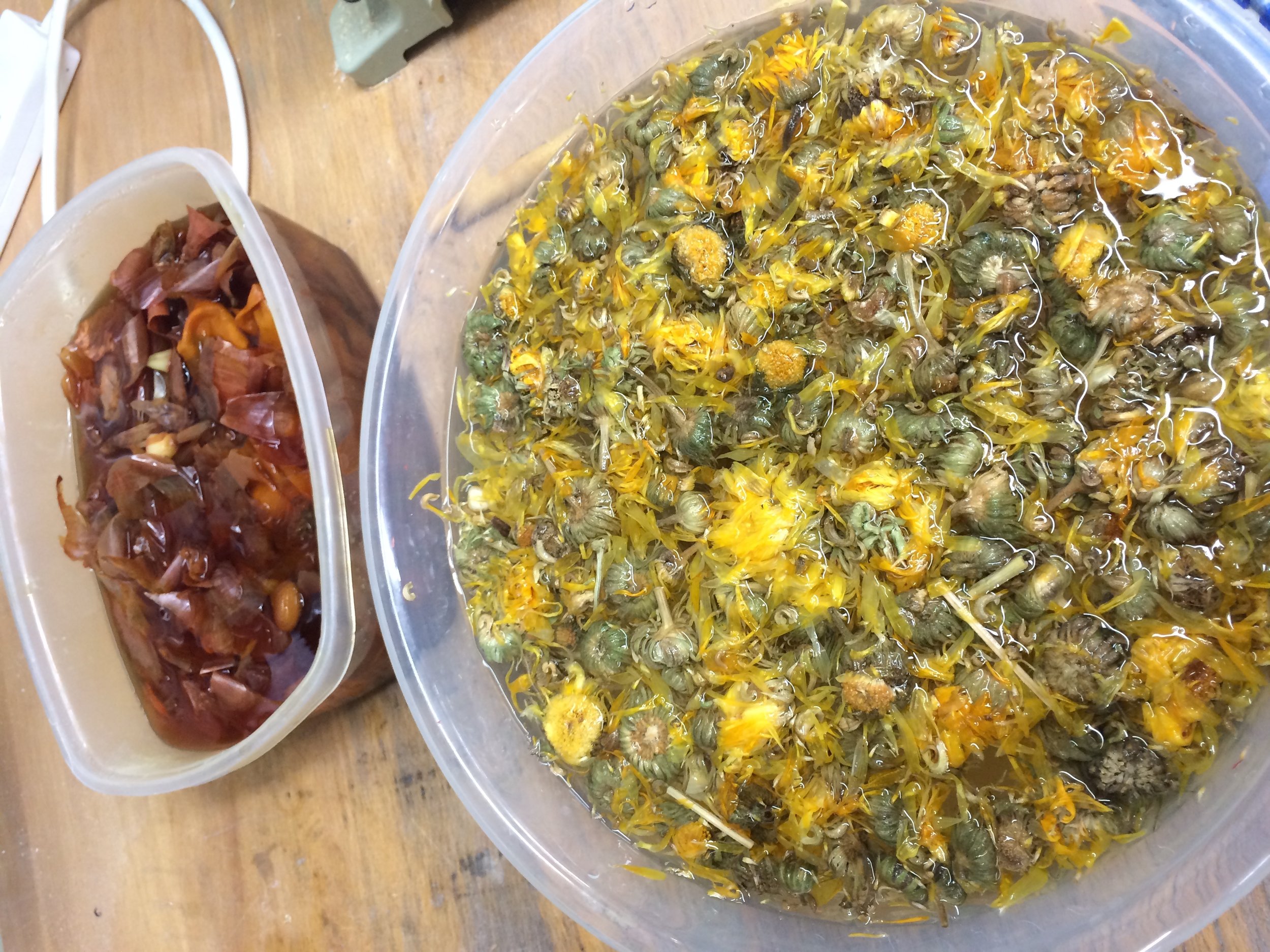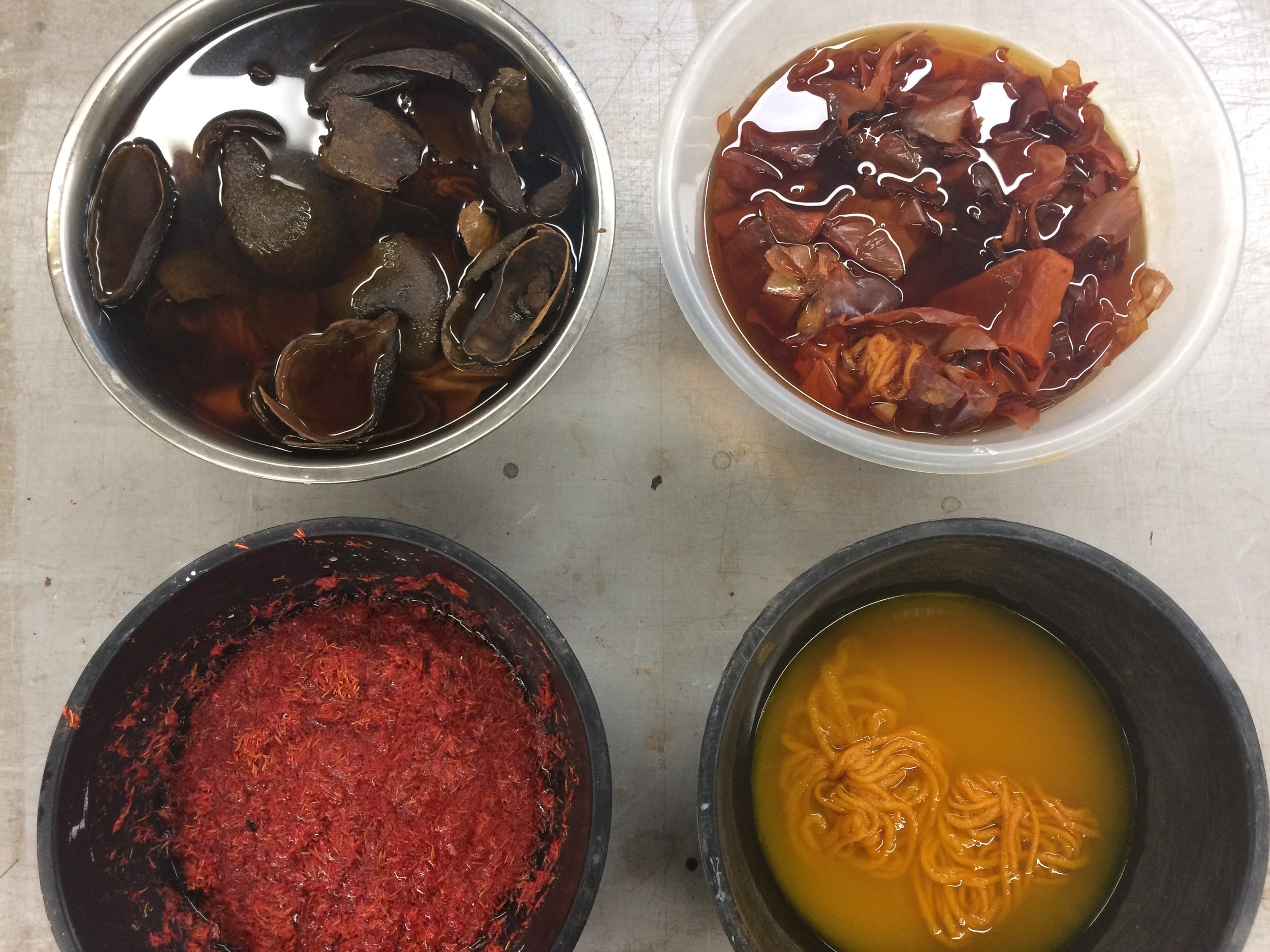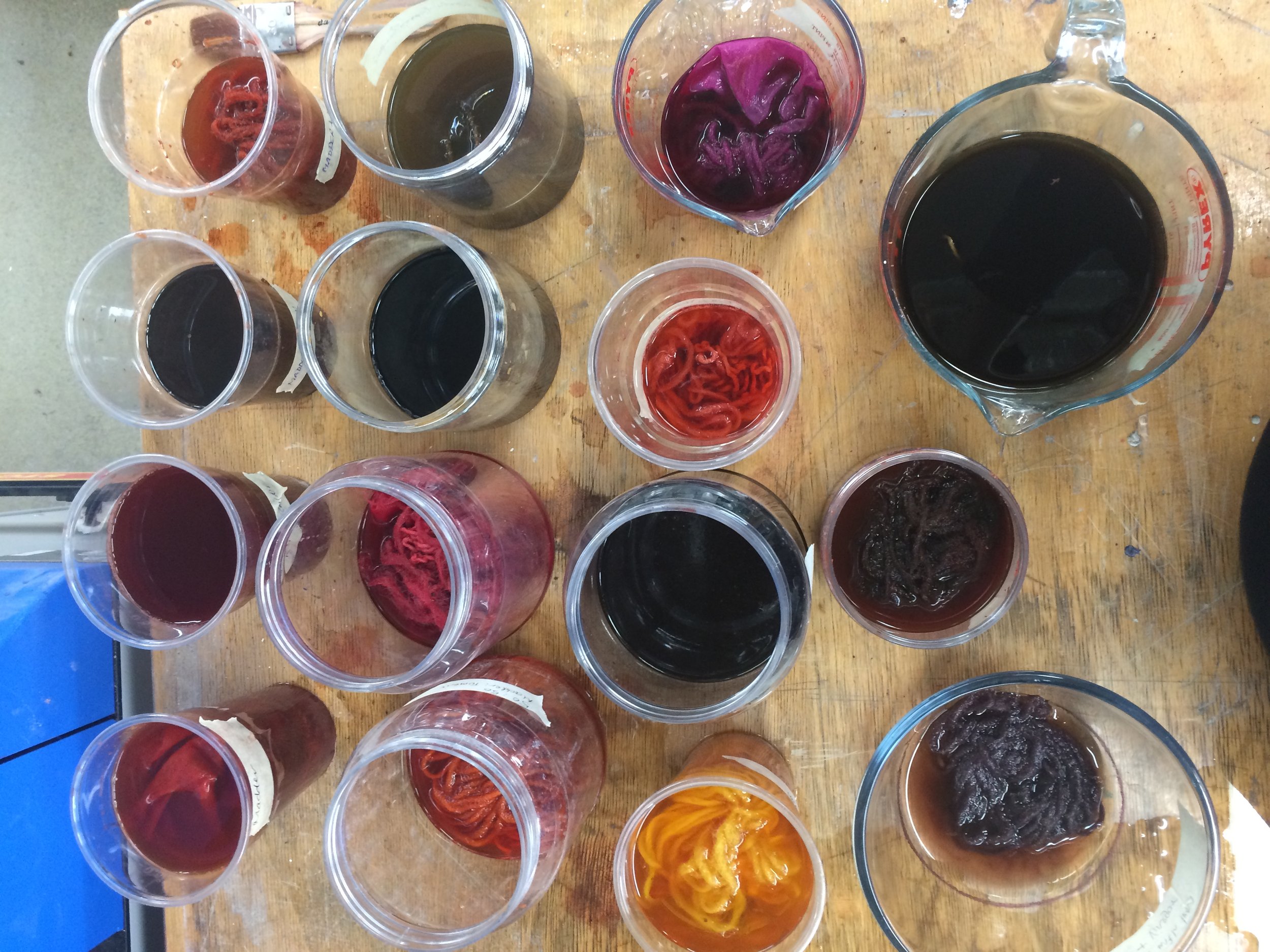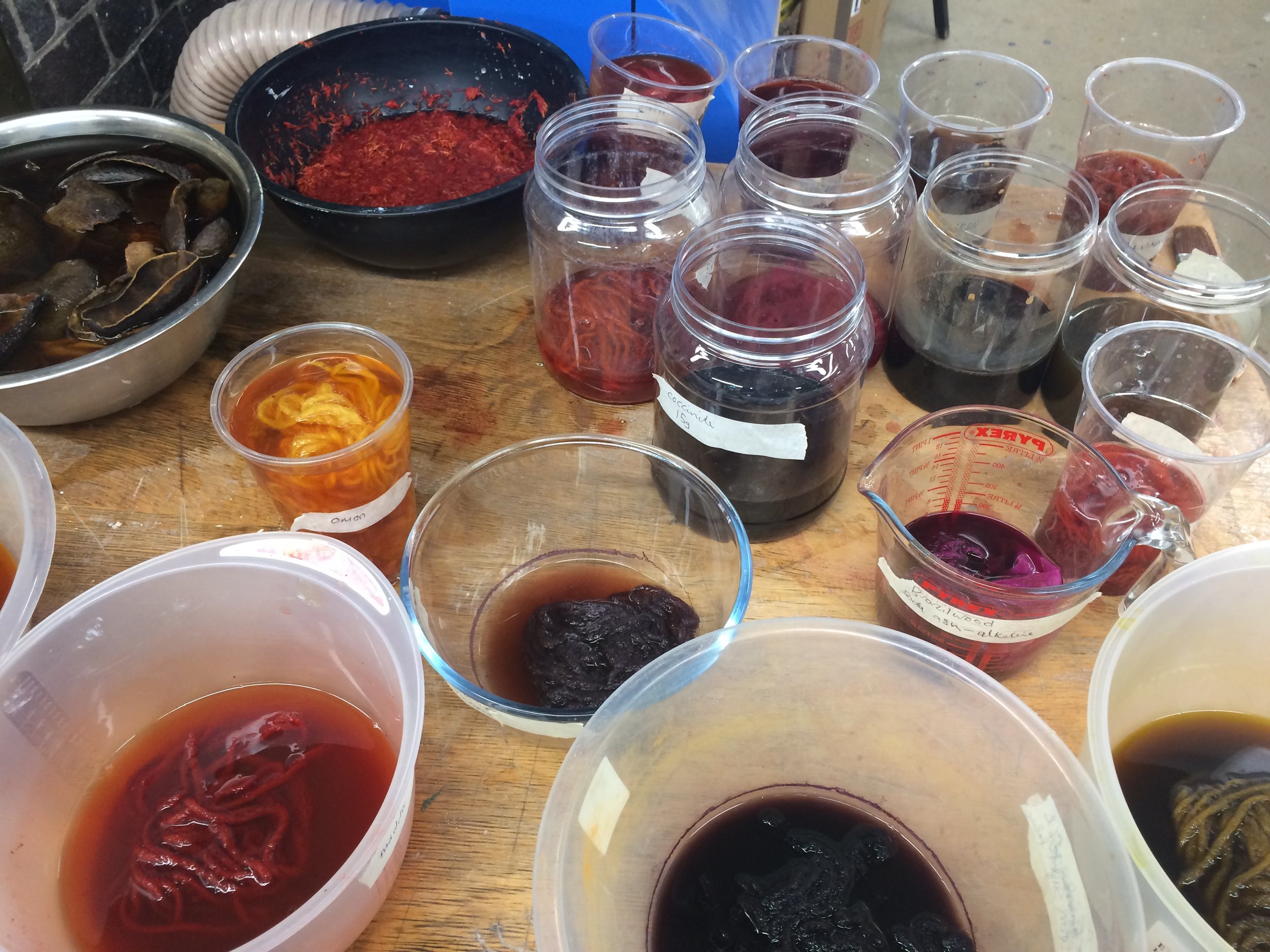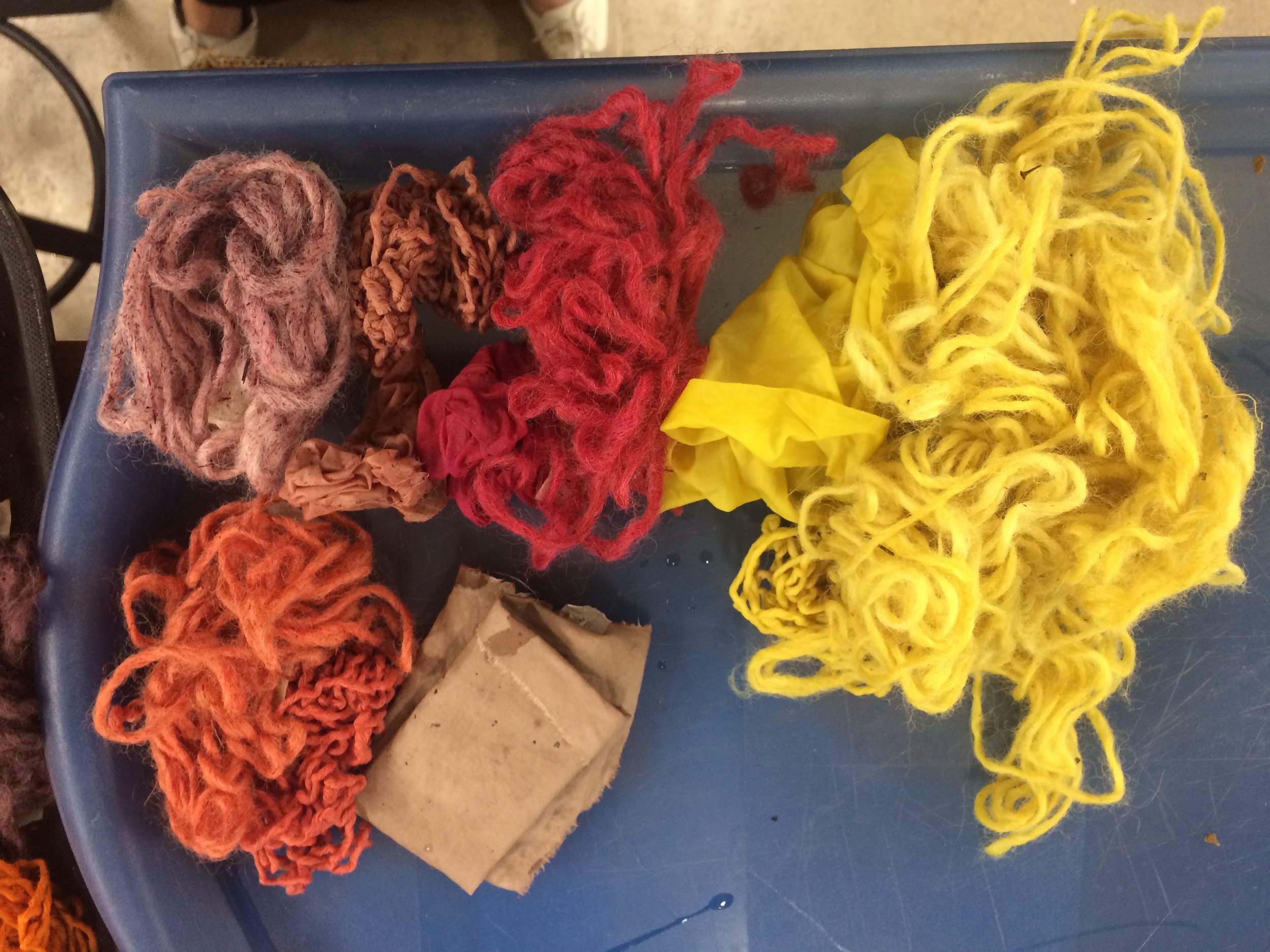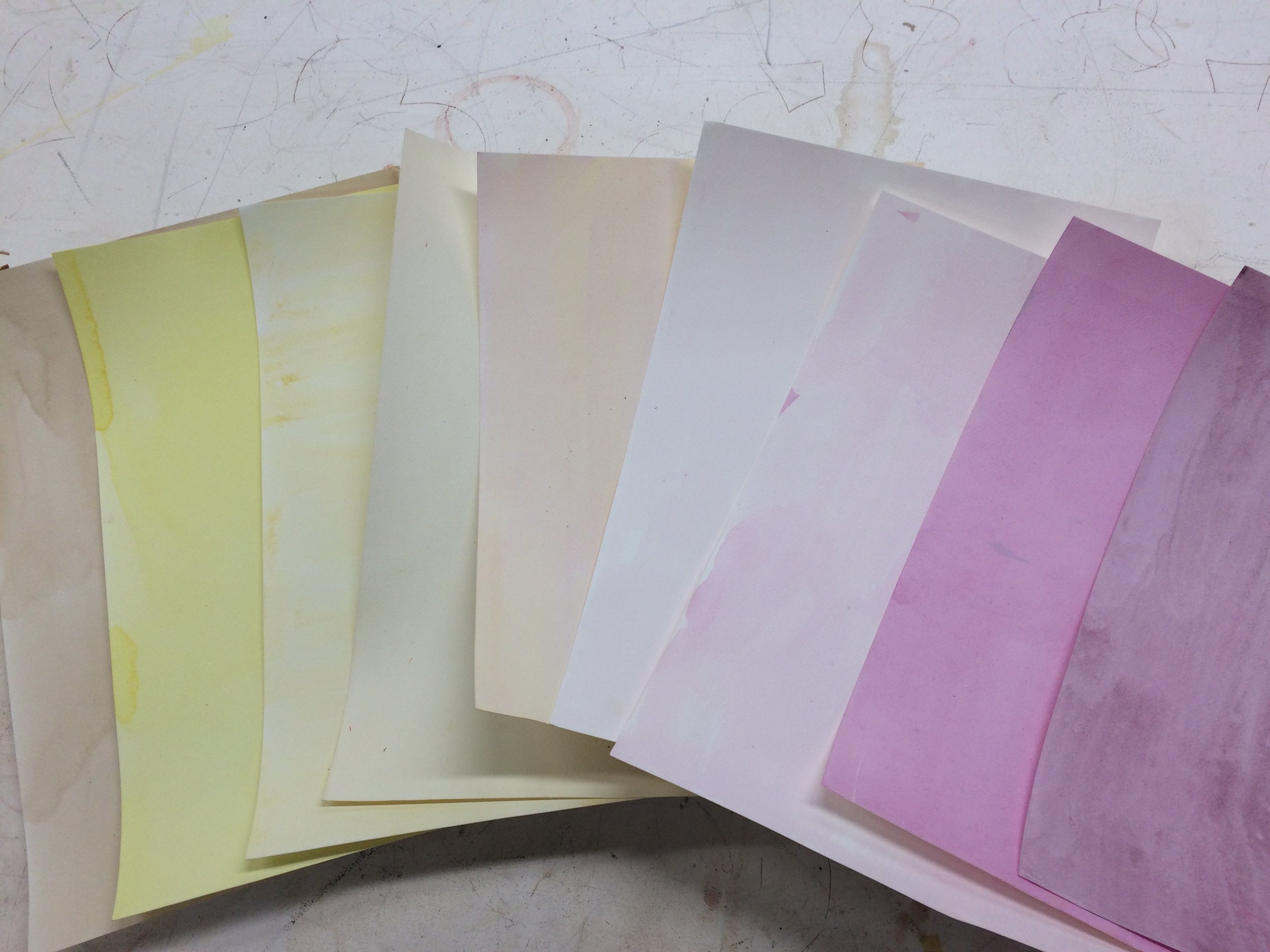I have been experimenting using natural dyes from plants, trees, rocks and minerals. I used dyes from onions skins, avocado, marigold flowers, weld, aubergine skins, madder, Brazilwood, tumeric, safflower, walnut, cochineal and Persian berries.
For fibres I used a mix of cotton, silk and wool.
First I cleaned the fibres thoroughly to remove any dirt. Different scouring processes were used depending on the material. For cotton and silk, I used soda as and for wool I used orvis.
Mordants are needed to fix the colour on to the fabric and they change depending on if it is a cellulous fibre such as cotton or silk, or a protein based fibre like wool. For cotton and silk I used an aluminium mordant. For the wools I used alum and cream of tartar for one batch and for another batch I used an iron mordant (ferrous sulphate).
I also experimented with adding extra soda ash to make the dye more alkaline to see how that varied the colour. I also tried adding vinegar to make it more acidic and seeing what affect that created.
Overall I am really impressed with the range of vibrant colours I was able to achieve using natural dyes. The process of doing this helped me to appreciate the craft element in making natural dyes. It almost felt like a ritual. Now when I walk in nature, I consider everything that is around me that can be used as a colourant from roots of trees, to bark, leaves, or flowers.
The Old Testament goes into great detail about the colours and materials that must be used to adorn the tabernacle. Now I have a greater appreciation of the process and craft practice that goes into producing these beautiful colours.
Finally, I dyed a couple of silks scarfs in cochineal and Brazilwood to be used as ladies head coverings during mass. I will give these as gifts to friends and family.

